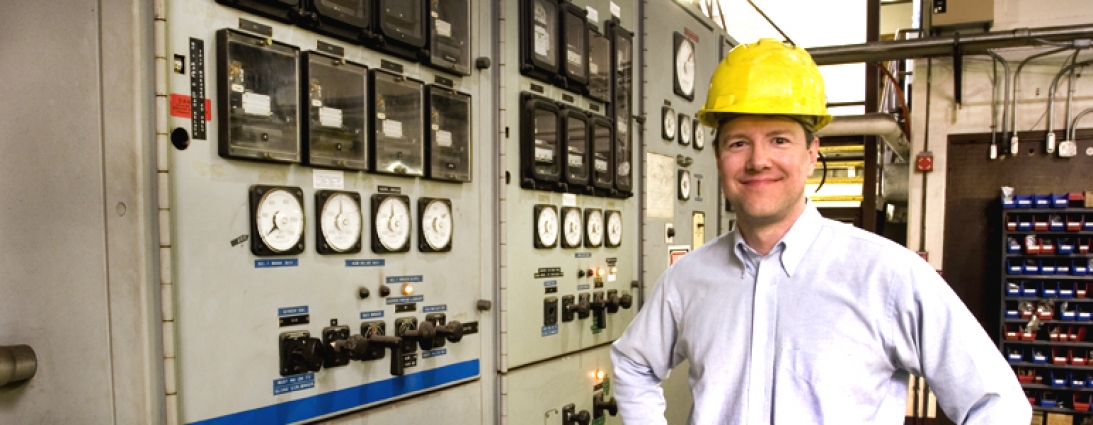

Self-generation systems offer sizable utility cost savings
With high and rising electricity prices in San Diego County, many local businesses are turning to distributed energy generation to help lower utility costs while greening their facilities and reducing their carbon footprint.
Originally published April 20, 2015, in the San Diego Business Journal special section “Sustainable San Diego.”
According to a 2014 survey conducted by the Institute for Building Efficiency, commercial investment is accelerating in distributed energy systems, such as solar, combined heat and power and energy storage. Thirty percent of executives reported installing on-site energy generation technologies in 2014, up from 19 percent in 2013.
While energy efficiency remains the first and lowest-cost way to reduce utility expenses, companies are finding many opportunities to save with parallel investments in distributed generation. However, how does a business know when the right time to move to self-generation is and which technologies will supply the biggest bang for the buck?
Various small and large companies throughout San Diego County have made investments in self-generation because it makes good business sense to reduce long-term operating costs, diversify their energy supply and help hedge against energy market volatility. Such systems can be sized to offset periods of peak energy demand that spike commercial electricity costs by up to 60 percent while delivering significant greenhouse gas reductions.
Pet Clinic Wanted Solar Power
For Dr. Patricia Ungar, co-owner of the Kensington Veterinary Hospital on Adams Avenue, the aspiration to go solar became a reality when she and business partner and husband Philip Linssen decided they needed considerably more air conditioning for their small business, which meant significantly more electrical consumption. “We wanted to find a long-term solution and cut back our carbon footprint,” Ungar said.
They had sufficient funds to purchase a 10.9-kilowatt, 42-panel solar photovoltaic (PV) system outright from Newport Power of San Marcos once they factored in a 30 percent federal tax credit, accelerated depreciation and a California Solar Initiative rebate. Their out-of-pocket cost was about $15,000.
Ungar reports that the PV panels now produce a third of the pet center’s energy needs and provide up to a 40 percent monthly utility bill savings.
Although tax codes, investment options and financing strategies are fairly complex and change regularly, according to James Reeve, Newport Power owner, PV systems are affordable for most any business. “If they own their building and have an electric bill above $500 a month, they are a candidate for solar,” Reeve said.
Hot Water Essential for Resort Hotel
While undertaking a $17 million renovation of the Quails Inn at Lake San Marcos into the luxurious Lakehouse Hotel & Resort, hospitality entrepreneur Brett Miller, CEO of Eat.Drink.Sleep., looked for ways to overcome some energy issues that he had no control over: long, hot showers and tons of soiled towels and linens.
“In the hospitality business, you can’t ask your guests to forego their comfort and personal choices for using less power and water, but you can choose sustainable systems that lower utility expenses,” Miller said. “You have to be savvy enough to make the right choices and willing to make capital expenditures to save money monthly.”
Miller turned to Simon Reeves of Reeves Mechanical of Temecula to install a solar water heating system with 32 rooftop collectors feeding three storage tanks for a total of 2,050 gallons of warm water. The $118,000 cost for the system was cut nearly in half by a rebate from the California Solar Initiative – Thermal Program, and with a federal tax credit and accelerated depreciation allowances, the final layout was about $43,600. Even though natural gas prices are relatively low today, Miller reports about a 75 percent savings on gas bills and projects a six-year return on investment.
Qualcomm Feels the Heat & Power
For companies with larger facilities and greater power needs, there are various distributed generation technologies scalable up to tens of megawatts of electricity with somewhat exotic names, such as waste heat to power, pressure reduction turbines and combined heat and power.
When telecommunications titan Qualcomm Inc. decided to take greater control of energy consumption at its Sorrento Valley locations, the solution selected was combined heat and power (CHP). Natural gas-powered turbines generate electricity on-site and the resulting otherwise wasted high heat is captured and converted into energy to cool indoor spaces, reducing the burden on electric chillers and avoiding additional electricity usage.
Currently, Qualcomm has three CHP systems delivering more than 13.5 megawatts of electricity that meet up to 90 percent of building needs and capture waste heat to run absorption chillers that provide air conditioning for facilities and data centers. In July, they will officially switch on another 4.5-megawatt CHP system, according to Gail Welch, Qualcomm’s director of sustainability.
“We’ve learned that executing significant energy investments requires transparency among corporate staff, access to data and energy experts who are on your side that can navigate the clean energy landscape with confidence,” Welch said. “Projects like this are an integral part of Qualcomm’s efforts to be more sustainable by increasing energy efficiency and reducing our carbon footprint while cutting costs.”
Multifamily Housing Links Technologies
One drawback of commercial PV solar applications is that sunlight is available only in the daytime and even then somewhat intermittently because of clouds and the changing angle of the sun. Now, a variety of companies offer on-site energy storage systems that can greatly improve solar’s value.
Pacific Housing Inc., a nonprofit public benefit company that develops low-income housing, installed a solar-storage system at the affordable apartment complex Carlton Country Club Villas in Santee to power the property’s office and outdoor lighting. Installed by Sunverge Energy, Inc. of Stockton, Calif., the system combines a 3.2-kilowatt PV system with 4.5 kilowatts of lithium-ion battery electricity storage that reduces common area utility costs after lease payments by about 20 percent.
“The system maximizes customer bill savings, leveraging SDG&E's small commercial time-of-use tariffs by offsetting site demand charges during peak pricing periods with excess solar energy generation,” said Jon Fortune, Sunverge’s director of regulatory and energy services.
Sunverge utilizes third-party lease financing, which allowed the leaseholder to receive a $10,800 rebate from California’s Self-Generation Incentive Program and, because the system is integrated directly with solar, leverage the federal solar investment tax credit. If purchased outright, it would have cost approximately $40,000.
Although this installation is on the smaller end of commercial applications, Fortune says it demonstrates how solar-storage systems are scalable down to single buildings and small enterprises to manage demand, lower electricity costs and provide backup power in the case of a grid outage.
Which technology is right for you?
There are many readily available ways for businesses to cut energy use, save on electricity bills and become more environmentally responsible. The key is finding a balance of energy efficiency, distributed energy generation and utility rate choices that align with your business goals and expected return on investment.
San Diego businesses can look to experts at the not-for-profit Center for Sustainable Energy (CSE) for help in assessing technical, operational and financial merits of distributed energy projects and other clean energy solutions, according to Jeremy Del Real, CSE’s senior energy engineer.
“The first step in determining which distributed generation technologies are a good fit for your facility is to perform a basic energy self-assessment,” said Del Real. “The results of this initial analysis will determine if a more detailed energy assessment should be pursued.”
To learn more about distributed generation and sustainable energy for your business, take CSE’s Clean Energy Assessment online at www.energycenter.org/assessment.
